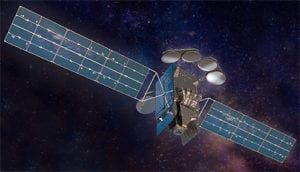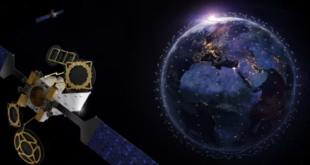
Maxar Technologies has been chosen to manufacture Intelsat 40e, a next-generation geostationary communications satellite scheduled to launch in 2022. Maxar will integrate NASA’s Tropospheric Emissions: Monitoring of Pollution (TEMPO) payload with the Intelsat 40e satellite.
“When it’s launched, Intelsat 40e will be the newest addition to our next-generation Intelsat Epic platform, which is already providing our global customers with flexible, high-performance connectivity they can count on today—and in the future,” Intelsat CEO Stephen Spengler said in an article published in Space News Daily.
“Intelsat continuously invests in innovative new satellite and hybrid technologies that make it easy and affordable for our customers to connect people, devices and networks, even in the most remote locations. We look forward to partnering with Maxar on this next build,” Spengler continued.
Based on Maxar’s proven 1300-class satellite platform and Intelsat Epic, Intelsat 40e will provide Intelsat customers across North and Central America with flexible, high-throughput, “coast-to-coast” coverage.
Its additional capacity will support the growing number of customers utilizing Intelsat managed-service offerings, including those working with Intelsat to solve connectivity challenges for commercial and private planes, moving vehicles on land, and other mobility applications.
In 2019, NASA selected Maxar to host its TEMPO payload utilizing the Space and Missile Systems Center Hosted Payload Solutions (HoPS) contract vehicle.
Now that Maxar has identified Intelsat 40e as the satellite, the company will begin the integration process. TEMPO is a UV-visible spectrometer that will detect pollutants by measuring sunlight reflected and scattered from the Earth’s surface and atmosphere.
The resulting data from TEMPO will be used to enhance air-quality forecasts in North America, enabling the more effective early public warning of pollution incidents. The combined Intelsat 40e and TEMPO programs are expected to be accretive to Maxar’s earnings and cash flow on an annual basis throughout the production process.
“Maxar and Intelsat have a strategic partnership that goes back more than 40 years, and we are honored to have been chosen for Intelsat 40e—the 54th satellite that Maxar will build for Intelsat over the course of our long and successful history together,” Maxar CEO Dan Jablonsky said in Space News Daily.” Maxar is also honored to have collaborated with NASA for more than 50 years, and we are excited to leverage our strong legacy in bridging commercial and government needs to integrate the agency’s TEMPO payload with Intelsat 40e.”
 SpaceWatch.Global An independent perspective on space
SpaceWatch.Global An independent perspective on space




